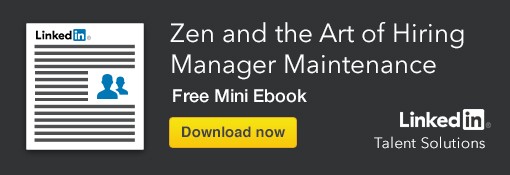Top Tips for Working with Remote Hiring Managers
One of the most appealing features about my role as a recruiter in a global organization is the opportunity to partner with hiring managers to identify first-class talent from different corners of the world.
Whilst this aspect of my role is exciting, it also brings challenges to the recruiter-hiring manager partnership. Namely, time differences, constant travel schedules, and, lack of “in person” interaction.
So, how does a talent acquisition professional work successfully with remote hiring managers?
1. Prepare upfront for the intake meeting
It’s important for the recruiter to set an agenda for the intake meeting to allow the hiring manager to prepare adequately. Equally, the recruiter can do their homework and conduct some preliminary market research such as discussing with incumbents their roles to better understand the “day-to-day” and if relevant activating possible referrals by leveraging their own internal or external networks. The recruiter can then more easily finalise job descriptions and identify possible LinkedIn member profiles to discuss.
The recruiter should devise upfront a realistic plan for how they will meet the expected hiring date. This plan should include suggested weekly investment of time by various stakeholders and numbers of candidates required at the different stages.
2. Conduct a thorough intake meeting
The intake meeting is not just handing off a shopping list to be fulfilled. This can be tempting but in the longer term this approach will not yield high-quality candidates since the recruiter’s understanding of the role will be limited.
Whilst it is important to agree the end-to-end process, the delivery timeline, stakeholders to be involved, cadence updates, the intake meeting should be discussing the bigger picture. The recruiter should be trying to understand what’s happening in the region where the hiring manager works, what are the opportunities for new employees in the role, what are the future plans for that business unit, what are the local labour market challenges, and, of course what “good” looks like in the eyes of the hiring manager.
3. Set up effective communication channels
In my opinion setting up effective communication channels will be the “make or break” aspect of a successful recruiting partnership with a remote hiring. Make a good use of collaboration tools including video conferencing facilities, webinar technology, phone conferencing or the old-fashioned telephone. Equally there are other technologies such as Skype which are cost-efficient and just as effective.
If possible the initial interaction between you and the hiring manager should be in person and if not, via video at least. The ability to have that “eyeball to eyeball” conversation demonstrates that both of you are giving this recruiting activity your full attention. In my experience this helps build rapport quicker as we see each other’s body language. This is important because it may indicate if you need to clarify something or if the hiring manager feels uncomfortable with some of the ideas.
After this first meeting, identify the best method for ongoing, effective contact (phone, e-mail, Skype). Then figure if hiring managers prefer updates as they happen, with a weekly digest, or do they prefer a detailed weekly report which you will then discuss in regular meetings. I’ve experienced both.
Agree how unexpected problems should be raised and keep an issues resolution log if necessary. Remember that thorough and constructive feedback on candidate performance must take place in a timely manner. Different time zones can make things difficult so it’s important to factor them in when managing expectations for the candidate too. This way they will get to have a good candidate experience, while getting timely and specific feedback.
4. And most of all, be flexible
Remote hiring managers won’t always be available when you are. Be prepared to work outside of normal business hours. Prepare candidates for the possibility of out-of-hours interviews using non-traditional methods such as video conferencing. It’s not always possible that the remote hiring manager is in the same location as the potential candidate. However, when this happens, you should make sure that the hiring manager prioritises any recruitment activity so all parties benefit from that “eyeball to eyeball” conversation.
That’s it. I hope this post can help you put a strategy in place for setting yourself up for success when embarking on a relationship with a remote hiring manager.
As a talent acquisition professional, I recognize that this may seem overwhelming and daunting at first, but in truth, it’s been one of the simplest ways for me to assimilate myself with the wider organization here at LinkedIn.
Are there any “top tips” I have missed? What could you do better next time if you were working with a remote hiring manager? What’s worked well for you? I’d love to learn from others’ experiences too.
Topics: Hiring managers
Related articles




